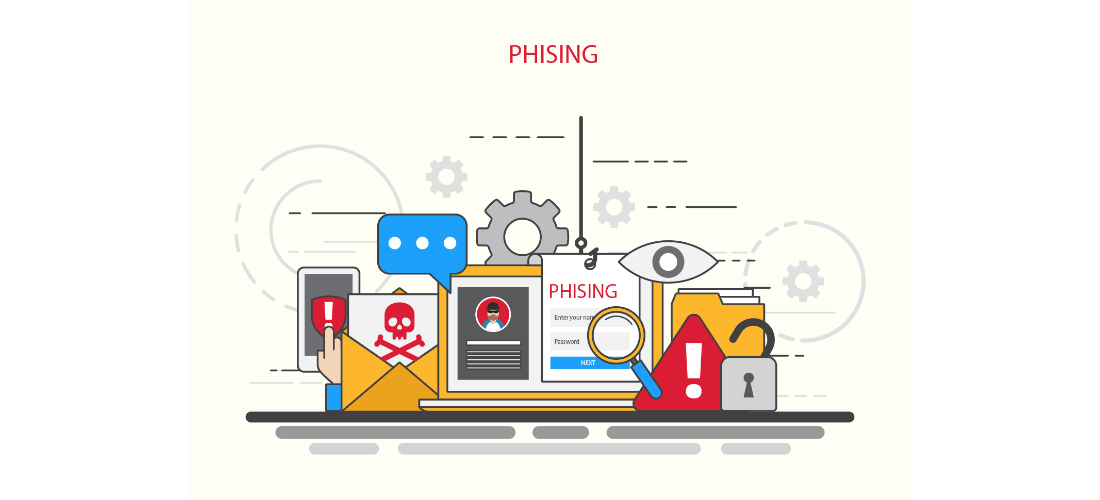
Why Businesses Should Be Investing In Cybersecurity?
6 yearsago 0 Comments 1.5k Views
Cybercrime is a significant threat to businesses of all sizes, ones that utilize digital technologies in their daily operations. As such, investing in cybersecurity should be the number one priority for enterprises across every industry so as to protect confidential data from malicious cybercriminals and maximize resistance against threats.

What is cybersecurity?
Cybersecurity is the protection of networks, systems, and data from digital attacks. It is applicable to every business operation, whether in the military, hospitals or corporations.
For enterprises undergoing digital transformation, security attacks go beyond a connected object or database and extend to their supply chain and partner/customer ecosystem. Cyber-terrorists often attempt to access or modify sensitive information, extort money from users, or disable normal business processes. This, in effect, can destroy organizations and damage people’s financial and personal lives.
These days, implementing effective cyber defense measures is absolutely essential before such attacks infiltrate networks or devices. Nevertheless, many industrial organizations still have not taken cybersecurity seriously and treated it as a critical business issue. As the rate of technological innovation accelerates, this poses numerous challenges for enterprises, requiring all people, processes, and technology to complement each other to develop an effective digital risk mitigation strategy.
Types of cyber threats
In order to defend people and the entire company against digital attacks, it is important for everyone to identify common types of cyber threats. While there are many types, from installing malware on a personal computer to attempting to destroy the infrastructure of entire organizations, they generally fall into three main categories: attacks on confidentiality, integrity, and availability.
1. Attacks on confidentiality

Attackers can use several methods to compromise confidentiality. Some examples include social engineering (psychologically manipulating people into performing actions or revealing information about network that can be used to steal or gain unauthorized access to data); phishing (hacking sensitive information like bank account, credit card details, etc. by sending deceptive emails); wiretapping (hacking telecommunication devices to listen to phone calls of others); or password attacks.
2. Attacks on integrity
Salami attacks (a series of minor security attacks leading to a larger attack) and data diddling attacks (illegally altering data) are examples of cyberattacks on integrity. A hacker will access sensitive information in an attempt to adjust some or all entries in the databases, release and steal private data, fake social media announcements, and make the public lose trust in that organization. Potential targets include industrial operating processes, customer retail records, or financial service transactions.
3. Attacks on availability
Another pillar of network security is availability. This type of cyberattack aims at infiltrating the network and blocking users from accessing their own data unless they agree to pay a fee or ransom. The most common form is DDoS attack (Distributed Denial of Service – disrupt normal traffic of a targeted server, service or network with a flood of traffic) which crashes the server and denies access to legitimate users. In some situations, some companies even have to pay the ransom and fix the cyber vulnerability afterward so as to avoid halting business activities and prevent further damage.
What does it mean to invest in cybersecurity?

First and foremost, it is crucial for companies to understand what should be the main goals for investing in cybersecurity: protecting customer data in a business to consumer (B2C) operation and/or protecting partner data in a business to business (B2B) operation. By doing so, organizations would be able to protect their own people and the entire business operation from the growing threat of cyber attacks, data breaches, and extortion.
Expenditure on cybersecurity is quite difficult to quantify – it is an intangible amount which depends on the type of business and how it operates. Moreover, it is challenging when companies aren’t aware of what and how disruptive a particular cyber threat might be. In other words, it would differ depending on whether it was a DDoS attack that crashes the website or a malware invasion that makes systems fail. Additionally, companies could consider investing in cybersecurity insurance to ensure against the financial losses, disruption and the costs to recover after a cyberattack. In general, business analysts estimate an average amount of 5% of one’s IT budgets should be spent on cybersecurity investment. Often, healthcare and financial services are sectors that spend the most on reducing cyber risk.
Securing confidentiality is not only concerned with engineers and analysts. Rather, it is everyone’s responsibility. As such, companies should develop cybersecurity awareness training programs for all staff and supervisors, putting an emphasis on the responsibilities associated with cybersecurity vigilance. This includes informing employees of security risks; educating them on potential measures to recognize and mitigate threats; showing how much damage there might be when the company is attacked; and how they would impact in terms of productivity, safety, and job protection.
Conclusion

In an era of big data, cyberattacks as an ever-present threat must be proactively understood and defended against to ensure the systems and databases are secured from malicious cyberthieves and criminals. Companies should start building a culture of cybersecurity and prioritize it by investing in protection plans or tools and providing continuous training and education on security best practices, motivating employees to raise security awareness.
According to Forbes + Big Data Made Simple + OmniSecu
——————–
How do you think about this article? Please share it with us via the comment section below.

PRIMUS – TOP MANAGEMENT JOBS ONLY





